ARUKU HITO
STATUS
COMPLETE
VOLUMES
1
RELEASE
January 1, 1998
CHAPTERS
18
DESCRIPTION
Who takes the time these days to climb a tree in bare feet to rescue a child's toy? To stop and observe the birds? To play in the puddles after a storm? To go down to the sea to put a shell back? The Walking Man does as he strolls at random through urban Japan—often silent, often alone—with his vivid dreams that let time stand still.
(Source: Ponent Mon)
CHAPTERS
REVIEWS

SrRogue
80/100O Homem que passeia é uma leitura muito agradávelContinue on AniListEsse é o primeiro mangá de Jiro Taniguchi que leio, e sei que não conseguirei captar tudo dele, infelizmente.
Dá para notar que o Taniguchi fala muito mais por imagens que por palavras, e acho que com isso sua obra é algo mais difícil de decifrar, analisar, tenho me meu pensamento que ele trabalha muito com simbolismo, apesar de não saber o que seja o simbolismo, há uma sensação, desde de muito antes de eu começar a ler essa obra, que o autor iria trabalhar muito com isso. Não sei se faz sentido o que digo, é uma intuição minha apenas.
Na Sinopse do mangá está a chave para entendermos a obra em questão, ao menos eu tenho essa sensação. A Sinopse é: Quem hoje em dia se dá ao trabalho de subir descalço em uma árvore para resgatar o brinquedo de uma criança? Para parar e observar os pássaros? Para brincar nas poças depois de uma tempestade? Descer ao mar para colocar uma concha de volta? The Walking Man faz enquanto caminha aleatoriamente pelo Japão urbano - muitas vezes em silêncio, muitas vezes sozinho - com seus sonhos vívidos que deixam o tempo parado.
Jiro Taniguchi quer levar aos japoneses a mensagem de que, talvez, eles devem tentar ser um pouco com o Homem que Passeia, aproveitar um bom passeio, olhar para a natureza, caminhar em um bosque, olhar para os pássaros, aproveitar o que de bom ao nosso redor tem a nos oferecer. Minha impressão é: o autor que nos fazer sair de uma vida corriqueira, apressada, e ir com calma, devagar. No último capítulo isso fica mais obvio, é o único capítulo que temos acesso aos pensamentos do protagonista, o qual sai de seu trabalho unicamente fazer um passeio. Ele anda pela cidade, pelas vielas, chega em um rio, e fica lá, olhando a paisagem, para o rio pequeno, e conversa com um humilde senhor pescando naquele cenário, não para pegar um peixe, mas para unicamente estar ali naquele lugar, respirando o ar da natureza. E diz para o Homem que Passeia: Quero viver minha vida devagar. Esse é o espírito da obra de Taniguchi, vá devagar, lento e suavemente, e você for ler o mangá com uma certa pressa perderá a ótima sensação que essa leitura nos dá, leia ela devagar e lentamente, a atmosfera que você sentirá será muito boa, eu te garanto. Talvez o autor só tenha feito tão curto, para lermos ele do mesmo modo que o protagonista vive.
Não tenho mais o que dizer sobre essa obra, só sei que eu adorei a experiência da leitura. É algo bastante agradável ver o protagonista passear pela cidade, pela sua vizinhança. Tem um capítulo muito bom em que ele aposta uma corrida com um senhor de idade mais avançada, e é só isso o capitulo inteiro, e sabe o impressionante de tudo isso? Eu me diverti vendo eles fazerem isso, o obra pode ter muito a dizer, ainda mais porquê sei que Taniguchi é alguém muito devotado ao temas envolvendo a natureza e a família, nesse mangá acho que ele tocou mais no assunto da natureza, e claro de aproveitar a vida mais devagar.

atomx
100/100Enjoying The Small MomentsContinue on AniListHave you ever returned from work and instead of taking your usual walk home you spontaneously decide to explore a different part of the city? Suddenly you end up in a street you have never seen before and it feels like another city although you haven’t strayed far from the normal route. Maybe it’s a bird's nest you see, kids playing in the street or just another view of the same building that you usually only see from one perspective.

Jirou Taniguchi’s Walking Man follows an unnamed protagonist that goes on small walks around his new neighbourhood after moving from another city. Each chapter he explores different streets and shops and meets new people. Whether it is observing birds with an old man or buying a childrens toy after seeing two school boys using their little money to buy a spinning toy, he enjoys every moment of his short walks.
The idea of enjoying the smaller moments in life isn’t exclusive to Japanese culture but definitely plays a huge role in it. “Ikigai” is a word that you might have heard in a similar context. Often used as a title for self-help books that are marketed for westerners, it describes the purpose of life or at least what we should live for. Our modern life is often so stressful and cluttered that we forget the small moments in life. Drinking a cup of coffee in the morning, seeing an old friend you haven’t met in a while or just seeing a candy wrapper that reminds you of your youth - these are all moments that might seem short and forgettable but harvest a greater power once you realize it.
There is a chapter in the middle of the manga where the protagonist decides to leave the train one station before his work and just walk to his destination. He goes through new quiet streets, sees cats relaxing in the sun and ends up at a riverbed where he talks to an old man. Realizing how stressful his normal life is he takes a moment to enjoy the peaceful moment alongside the birds and stream of the river. Thirty minutes later he will be sitting in his office dealing with business related tasks but that doesn’t matter right now. What matters is the current moment, if we only look into the stressful future we won’t have the ability to see the joy in the present.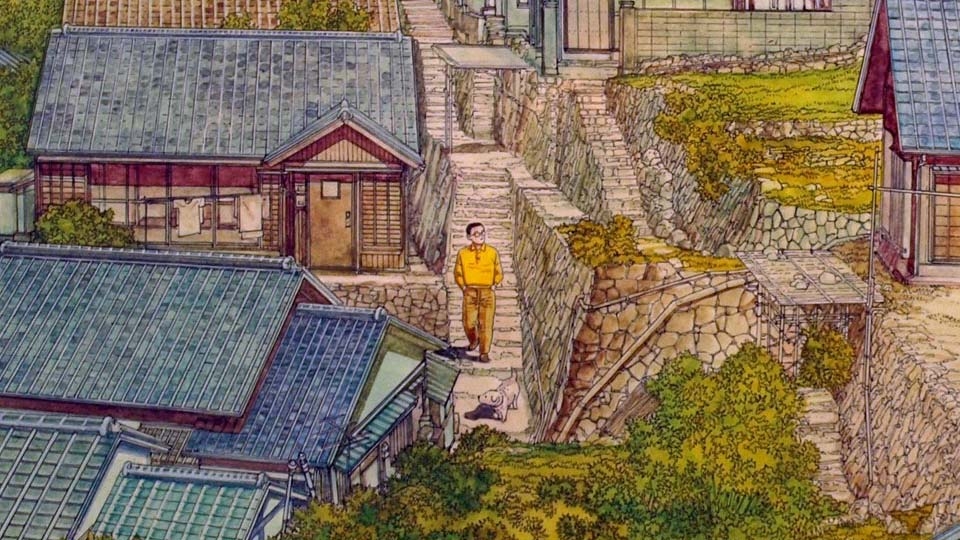
All this is beautifully shown through Taniguchi’s realistic illustrations. Largely influenced by French, Belgian and Italian artists, his style is detailed and very atypical for manga.
"The paradox is that while being mangaka, my style is quite close to comics the European and that I put a lot of elements in each image. I am probably somewhere between comics and manga from this point of view. And maybe that's why for some Japanese readers my manga are difficult to read .
It works perfectly especially for a manga that features minimal dialogue. His drawings alone already tell a story that doesn’t need dialogues to explain itself. One chapter shows a “walking battle” where the protagonist and an old man keep overtaking one another as they slowly traverse the city. Except for sound bubbles there is not a single line of dialogue. The facial expressions of both characters are already enough for us to decipher how they are feeling.
SIMILAR MANGAS YOU MAY LIKE
 MANGA Sci-FiYokohama Kaidashi Kikou
MANGA Sci-FiYokohama Kaidashi Kikou MANGA PsychologicalKyou wo Aruku
MANGA PsychologicalKyou wo Aruku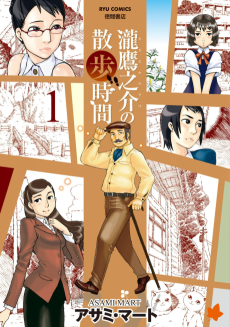 MANGA Slice of LifeTaki Takanosuke no Sanpo Jikan
MANGA Slice of LifeTaki Takanosuke no Sanpo Jikan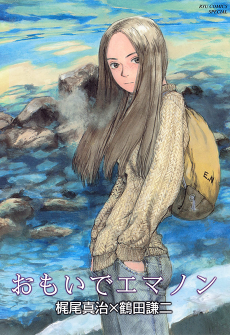 MANGA DramaOmoide Emanon
MANGA DramaOmoide Emanon MANGA ComedyYotsuba to!
MANGA ComedyYotsuba to!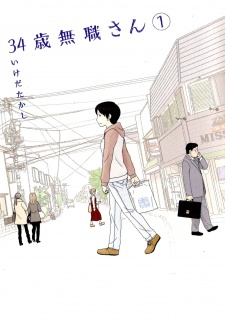 MANGA Comedy34-sai Mushoku-san
MANGA Comedy34-sai Mushoku-san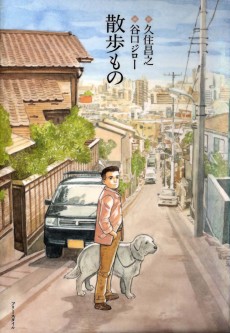 MANGA Slice of LifeSanpo Mono
MANGA Slice of LifeSanpo Mono MANGA Drama9-gatsu 10-gatsu
MANGA Drama9-gatsu 10-gatsu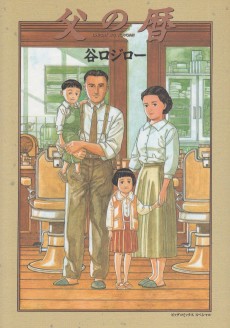 MANGA Slice of LifeChichi no Koyomi
MANGA Slice of LifeChichi no Koyomi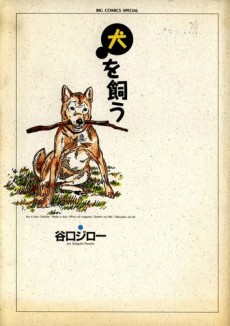 MANGA DramaInu wo Kau
MANGA DramaInu wo Kau MANGA Slice of LifeMetamorphose no Engawa
MANGA Slice of LifeMetamorphose no Engawa
SCORE
- (3.5/5)
MORE INFO
Ended inJanuary 1, 1998
Favorited by 108 Users

